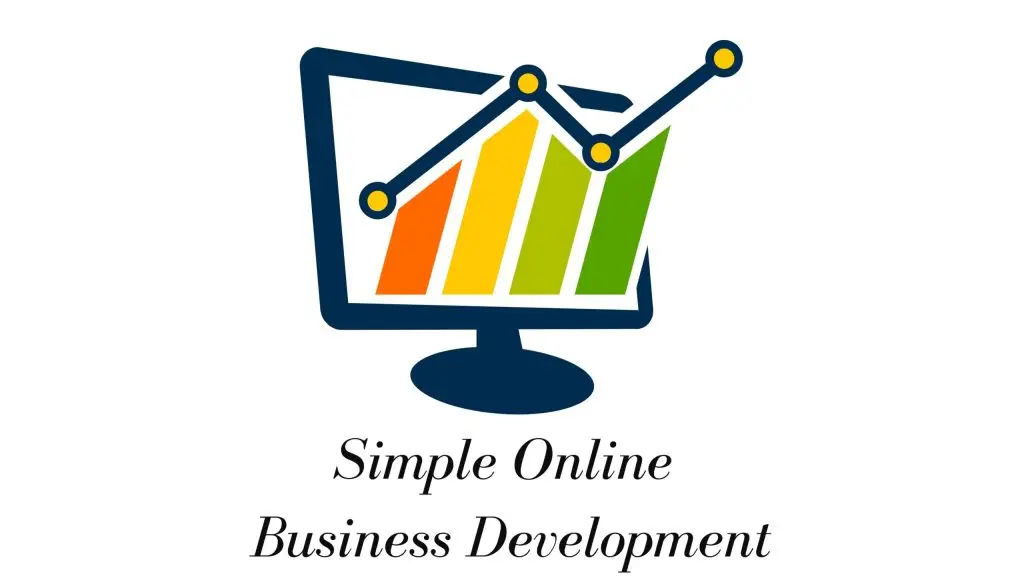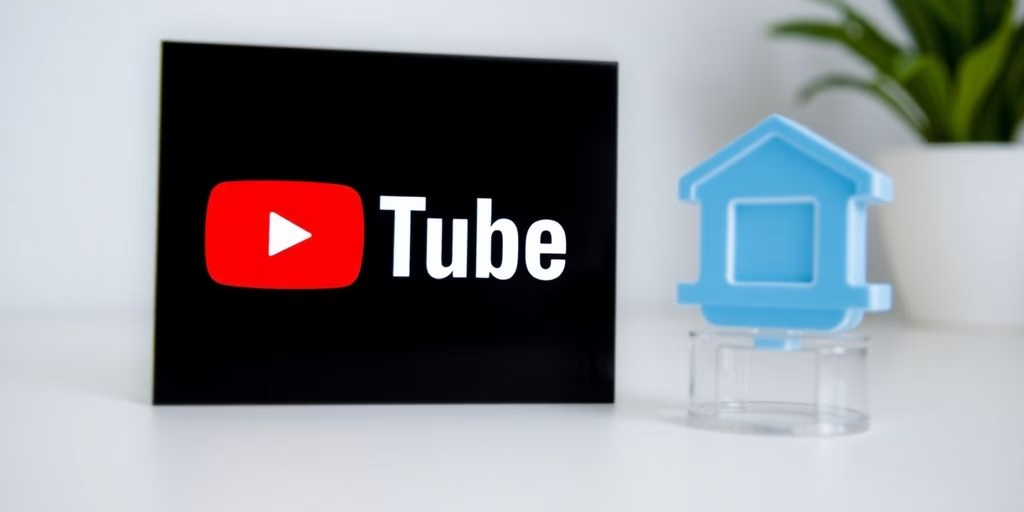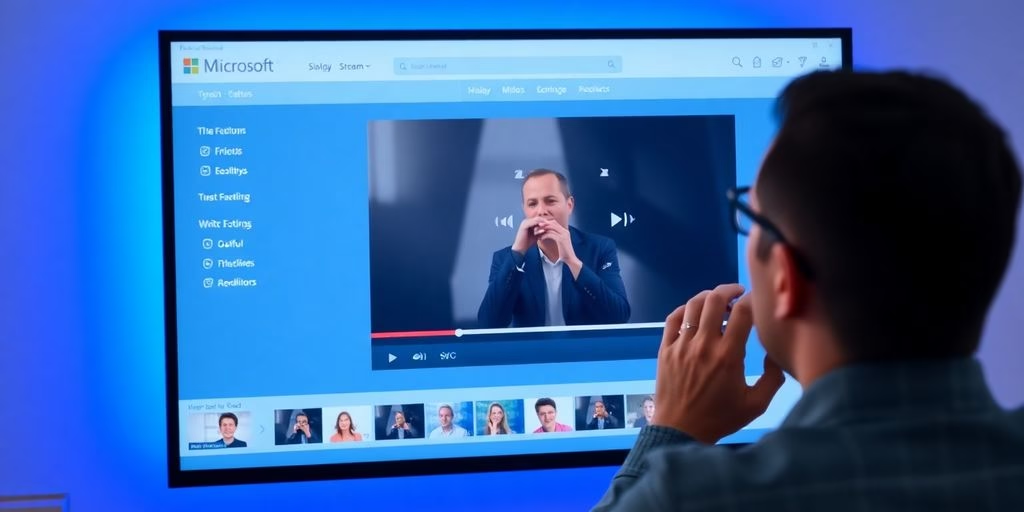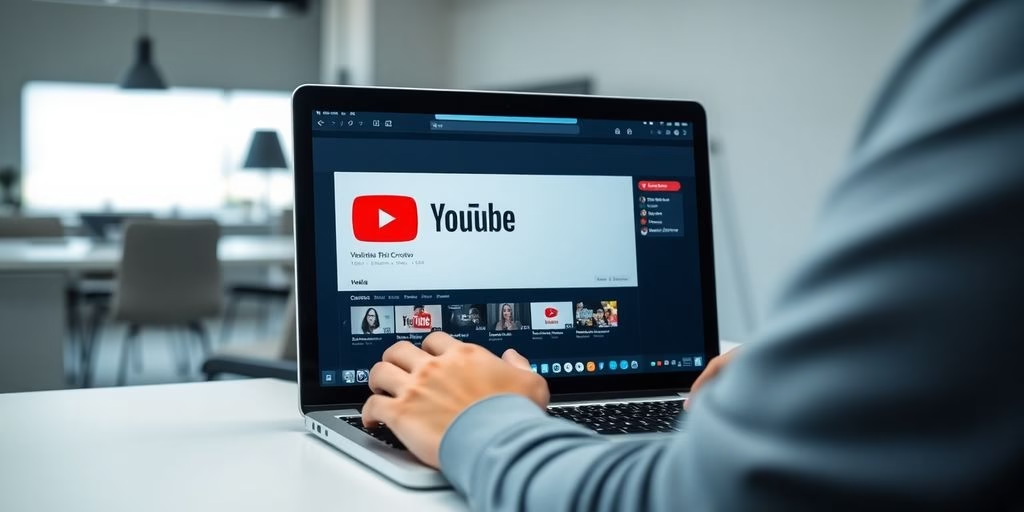Thinking about making money online with affiliate marketing? It’s a popular way to earn, but just putting links out there isn’t enough. To really make it work, especially in 2025, you need to get good at SEO. This means making sure people can find your content when they search online. We’ll talk about how to get your content seen without all the tech headaches.
Key Takeaways
- Focus on creating content that genuinely helps people first, not just selling products.
- Use keyword research to find topics people are actually searching for and include those words naturally in your content.
- Build trust and authority by getting links from other reputable websites and making sure your own site is well-linked internally.
- Make sure your website works well on phones and consider how people search using voice commands.
- Keep an eye on your results using analytics to see what’s working and adjust your approach as needed.
Unlock Your Affiliate Marketing Potential with Smart SEO
Getting your affiliate marketing efforts noticed in 2025 really comes down to being smart with your Search Engine Optimization, or SEO. It’s not just about getting a website up; it’s about making sure the right people find it when they’re looking for what you’re promoting. Think of SEO as your digital megaphone, helping you reach a wider audience that’s actually interested in your recommendations.
Understanding The Power of SEO for Affiliate Success
SEO is basically how search engines like Google figure out what your content is about and how relevant it is. For affiliate marketers, this means if you write about, say, the best hiking boots, good SEO helps people searching for "best hiking boots" find your review. It’s the bridge between your content and potential customers. Without it, you’re shouting into the void. It’s about getting seen online without tech overwhelm, making sure your affiliate links actually get clicked.
Navigating The Evolving Landscape of Affiliate SEO
Search engines are always changing their rules, which can feel a bit like trying to hit a moving target. What worked last year might not be as effective now. For instance, Google is really pushing for content that’s helpful and created for people, not just for search engines. This means focusing on genuine value and answering user questions thoroughly. It’s a good thing, really, because it pushes us to create better stuff. We need to keep up with how people search, whether it’s typing into a search bar or talking to their smart speakers.
Setting Yourself Up for Affiliate Marketing Wins
So, how do you get started on the right foot? It’s about building a solid base. This involves a few key things:
- Finding your niche: What topics are you genuinely interested in and knowledgeable about? This makes content creation easier and more authentic.
- Keyword research: Figure out what terms people are actually typing into search engines when they’re looking for products or information related to your niche. Tools can help with this.
- Content quality: Create content that’s informative, engaging, and solves a problem for your audience. Think detailed reviews, helpful guides, and comparisons.
- Technical basics: Make sure your website loads quickly and works well on mobile phones. This is super important because most people browse on their phones these days.
Focusing on these core areas from the start will make a big difference in how successful your affiliate marketing journey becomes. It’s about building a strong foundation that search engines and users will appreciate.
Crafting Content That Captivates and Converts
Creating content that people actually want to read and that also helps you make money is the name of the game in affiliate marketing. It’s not just about slapping links everywhere; it’s about building trust and providing real value. When your audience sees you as a reliable source of information, they’re much more likely to click on your recommendations.
The Art of People-First Content Creation
Think about what your audience is searching for. What problems are they trying to solve? What questions do they have? Your content should directly address these things. Instead of just talking about a product, talk about how that product can help someone achieve a goal or overcome a challenge. Focus on the reader’s needs, and the conversions will follow. It’s about being helpful first and promotional second. This approach builds a loyal following that trusts your judgment.
Leveraging Long-Form Content for Authority
Longer articles, often called long-form content, are fantastic for affiliate marketing. They give you the space to really dig into a topic, compare products, and explain benefits in detail. This depth signals to search engines that you’re an authority on the subject, which can help you rank higher. Plus, more words mean more natural places to include your affiliate links. Think about creating detailed product reviews, comprehensive buying guides, or step-by-step tutorials. These types of articles are gold for both your audience and your affiliate income. You can find great resources on content strategy for affiliate marketing to help you plan these out.
Creating Engaging Product Reviews and Guides
When you write a review or a guide, be honest. People can spot a fake review a mile away. Talk about the good and the bad. If a product has a drawback, mention it and explain how it might affect the user. This transparency is key to building trust. Use real-life examples, share your personal experience if possible, and include visuals if you can. A well-written, honest review that helps someone make a good decision is far more effective than a purely salesy piece. Remember, your goal is to guide your audience, not just to push products.
Being upfront about your affiliate relationships is also super important. A simple disclosure at the beginning of your content lets readers know that you might earn a commission if they buy through your link. It’s good practice and builds even more trust.
Mastering Keyword Research for Affiliate Visibility
Finding the right words people actually type into search engines is a big deal for affiliate marketers. It’s like knowing the secret handshake to get noticed. When you nail your keyword research, you’re basically telling Google, “Hey, I’ve got exactly what this person is looking for!” This is super important for getting your content in front of the right eyes. Think about it: if someone searches for “best budget-friendly noise-canceling headphones for studying,” and your article pops up because you used those exact words, you’re way more likely to get a click than if you just wrote about “cool headphones.” It’s all about matching what people want with what you’re offering.
Finding Your Niche with Precision
Before you even think about keywords, you need to know your area. What are you passionate about? What products do you genuinely like? Picking a niche helps you focus your efforts and become a go-to source for that topic. It also makes keyword research much easier because you’re not trying to cover everything. Once you have your niche, you can start digging into what terms people use when they’re looking for products or information within that space. It’s like becoming a detective for search terms.
Strategic Keyword Integration for Search
Okay, so you’ve found your keywords. Now what? You can’t just stuff them everywhere; that’s a big no-no. The trick is to weave them naturally into your content. Think about where people look for information: titles, headings, the main body of your text, and even image descriptions. Using a mix of broad terms and more specific, long-tail keywords (like the headphone example) is a smart move. Long-tail keywords often have less competition and attract people who know exactly what they want, meaning they’re often closer to making a purchase.
Uncovering High-Demand Topics
How do you find these golden keywords? There are tons of tools out there that can help. You can use things like Google Keyword Planner, SEMrush, or Ahrefs to see what’s popular and what people are searching for. Look at what questions your audience is asking. What problems are they trying to solve? Your content should aim to answer those questions. Sometimes, just browsing forums or social media in your niche can give you great ideas for what terms people are actually using. The goal is to become a helpful resource, not just a sales pitch.
Remember, search engines want to show users the most relevant and helpful results. If your content directly answers a searcher’s query using the language they used, you’re already winning half the battle. It’s about being helpful first and foremost. This approach not only helps with SEO but also builds trust with your audience, which is super important for long-term affiliate success. You can find great resources on getting your website seen online to help with this. It’s a win-win situation.
Building Authority Through Strategic Link Building

Building up your website’s authority is super important for affiliate marketing, and a big part of that comes down to how you handle links. Think of links as votes of confidence from other sites; the more good votes you get, the more search engines trust you. It’s not just about stuffing links everywhere, though. We’re talking about smart, strategic linking that makes sense for both users and search engines.
The Importance of Internal and External Links
Internal links connect different pages within your own website. They help search engines understand your site’s structure and spread
Optimizing For Every Device and Search
It’s super important that your affiliate content works well no matter how someone finds it. Think about it – people are browsing on their phones while waiting for coffee, on tablets on the couch, and on desktops at home. If your site isn’t easy to use on all of them, you’re missing out.
Ensuring a Seamless Mobile Experience
Seriously, most people are on their phones these days. Google even looks at your mobile site first when deciding where to rank you. So, make sure your pages load fast on a phone, buttons are easy to tap, and text is readable without zooming. It’s all about making it simple for visitors, wherever they are. We need to make sure our affiliate pages are optimized for mobile users to capture the majority of traffic on mobile devices.
The Rise of Voice Search and AI
People are talking to their devices more and more, asking questions naturally. This means you should think about how people ask for things, not just what they type. Try using question-and-answer formats in your content, and keep your language conversational. AI is also changing search, so staying updated on how these tools work is a good idea.
Making Your Content Discoverable Anywhere
Beyond just phones and desktops, think about how search engines understand your content. Using structured data, like telling Google what a product is or if it has a star rating, can make your listings stand out in search results. This helps people click on your links more often. It’s like giving search engines a little cheat sheet so they can show your content to the right people.
Getting your content in front of people means thinking about all the ways they search. It’s not just about keywords anymore; it’s about being clear, easy to use, and helpful on every screen and through every type of search query.
Data-Driven Decisions for Continuous Growth
It’s easy to get caught up in creating content and promoting products, but if you’re not looking at the numbers, you’re kind of flying blind. Making smart decisions about your affiliate marketing efforts really comes down to watching what’s working and what’s not. Think of it like this: you wouldn’t keep trying to fix your bike with the same wrong tool, right? Same idea here. We need to see what’s actually bringing in results.
Tracking Your Affiliate Marketing Performance
First things first, you’ve got to keep an eye on how things are going. This means checking out your click-through rates (CTRs), seeing how many people actually buy something after clicking your link (conversion rates), and even looking at how much they spend on average. Tools like Google Analytics are super helpful for this. They show you who’s visiting your site and what they’re doing, which helps you figure out which strategies are actually driving traffic and sales. Paying attention to these numbers is how you’ll know what to do more of and what to change.
Analyzing Key Metrics for Insights
Once you’re tracking, it’s time to actually look at the data and figure out what it means. Are certain products getting way more attention? Are specific types of content leading to more sales? Maybe you notice that posts about a particular topic get a lot of clicks but don’t convert well. That’s useful information! It tells you maybe the content is good for getting people there, but the offer itself isn’t quite hitting the mark. You can use this info to tweak your approach, maybe try different products or adjust how you talk about them. It’s all about finding those little wins and learning from the not-so-wins.
Adapting Your Strategies with Confidence
This is where the real magic happens. When you understand your performance data, you can make changes with confidence. Instead of guessing, you’re making informed decisions. For example, if you see that video reviews are really popular with your audience, you might decide to create more of those. Or, if a certain social media platform is sending you a lot of traffic that converts, you’ll want to focus more energy there. It’s about being flexible and willing to adjust your plan based on what the data tells you. This continuous loop of checking, analyzing, and adapting is what keeps your affiliate marketing growing and successful. It’s also important to keep up with new trends, like how AI is changing marketing, to stay competitive.
Staying Ahead with Advanced SEO Tactics
Alright, let’s talk about the stuff that really makes your affiliate site sing in the search results. We’re moving past the basics here, getting into the advanced SEO tactics that can seriously boost your visibility and, you know, your earnings. It’s all about staying sharp and adapting.
Technical SEO Essentials for a Strong Foundation
Think of technical SEO as the engine under the hood of your website. If it’s not running smoothly, nothing else matters. We’re talking about making sure your site is fast, easy for search engines to crawl, and works perfectly on phones. Google really likes sites that load quickly, so optimizing images and code is a big deal. Also, since most people browse on their phones, Google pays a lot of attention to the mobile version of your site. Make sure it’s easy to use and looks good on a small screen.
Getting the technical side right means search engines can actually find and understand your content, which is pretty important if you want people to see it.
The Impact of Structured Data
This is where you give search engines a little extra help. Structured data, or schema markup, is like adding helpful labels to your content. It tells Google exactly what your page is about – is it a product review? A recipe? An FAQ? When you use it right, you can get those cool rich snippets in the search results, like star ratings or prices, which can really make your listing stand out and get more clicks. It’s a smart way to improve your click-through rates.
Keeping Pace with Industry Trends
SEO isn’t a set-it-and-forget-it thing. The search landscape changes constantly. What worked last year might not be as effective today. You need to keep an eye on what’s new, like how AI is changing search or new ways people are finding information. Staying informed means you can adjust your strategy before everyone else does. It’s about being proactive and always learning. For instance, understanding how to do effective keyword research is always a good starting point, but knowing how to adapt that research to new search behaviors is key.
Wrapping It Up: Your Path to Affiliate SEO Success
So, we’ve gone over a lot of stuff about making your affiliate marketing work better with SEO. It’s not just about keywords anymore, right? It’s about making good content that people actually want to read, building up your site’s trust, and making sure everything works smoothly on phones. Remember to keep an eye on what’s new in the search world and don’t be afraid to tweak your approach based on what the data tells you. It might seem like a lot, but taking it step-by-step will really pay off. You’ve got this!
Frequently Asked Questions
What exactly is SEO for affiliate marketing?
Think of SEO like making your website easy for search engines like Google to find. When people search for things, good SEO helps your website show up higher, bringing more visitors who might be interested in the products you recommend.
What does ‘people-first content’ mean?
It means writing content that people actually want to read and find helpful. Instead of just talking about products, you explain how they solve problems or make things better for your audience. This makes people trust you more.
Why is long-form content important for affiliate marketing?
Long-form content is like a detailed story or guide about a topic. It helps you become an expert in that area. This can include in-depth product reviews, comparisons, or how-to guides that give readers lots of useful information and naturally include your affiliate links.
What is a ‘niche’ and why do I need one?
This is about finding a specific group of people or a particular topic to focus on. Instead of trying to talk to everyone, you pick something you know a lot about and that people are searching for. This makes it easier to become known as an expert.
Why is it important to make sure my website works on phones?
This means making sure your website works well on phones and tablets. Since many people use their phones to search, having a site that looks good and is easy to use on a small screen is super important for getting found.
What does ‘tracking performance’ mean in affiliate marketing?
It’s like checking your grades. You look at how many people visit your site, which links they click, and if they end up buying something. This helps you see what’s working well and what you need to change to get more results.









































